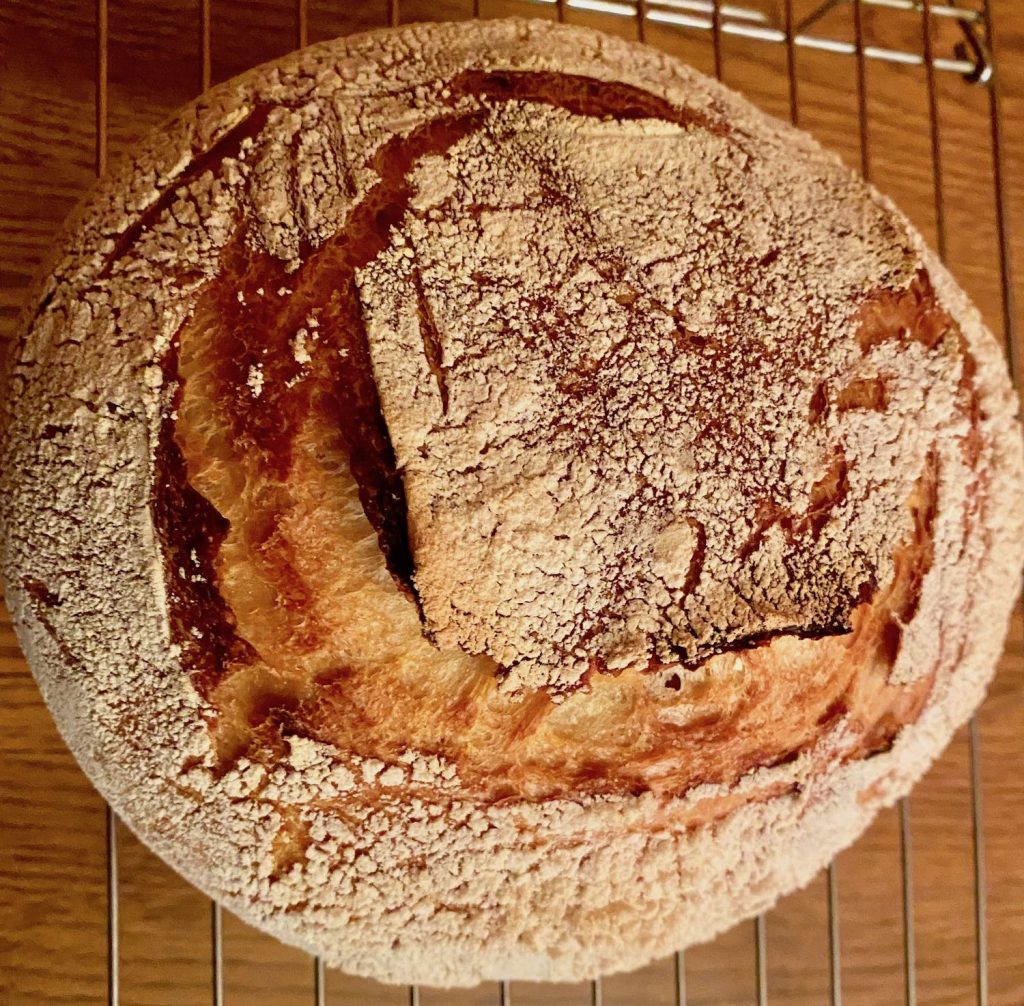
I’m obsessed with sourdough right now and it is clear that I am not alone. It seems like half the country is caring for sourdough starter these days.
I wanted to share some of my experiences working with sourdough and some recipes that I like.
I love that I don’t have to buy yeast. There’s something so satisfying about not being tied to the supply chain for this crucial ingredient.
The idea of wild yeast floating around my house and being captured in my flour and water mixture (to power future crusty loaves of bread) is a little intoxicating. I’m constantly checking on the bubbly sour-smelling stuff that makes flour rise into puffy, silky mounds of dough.
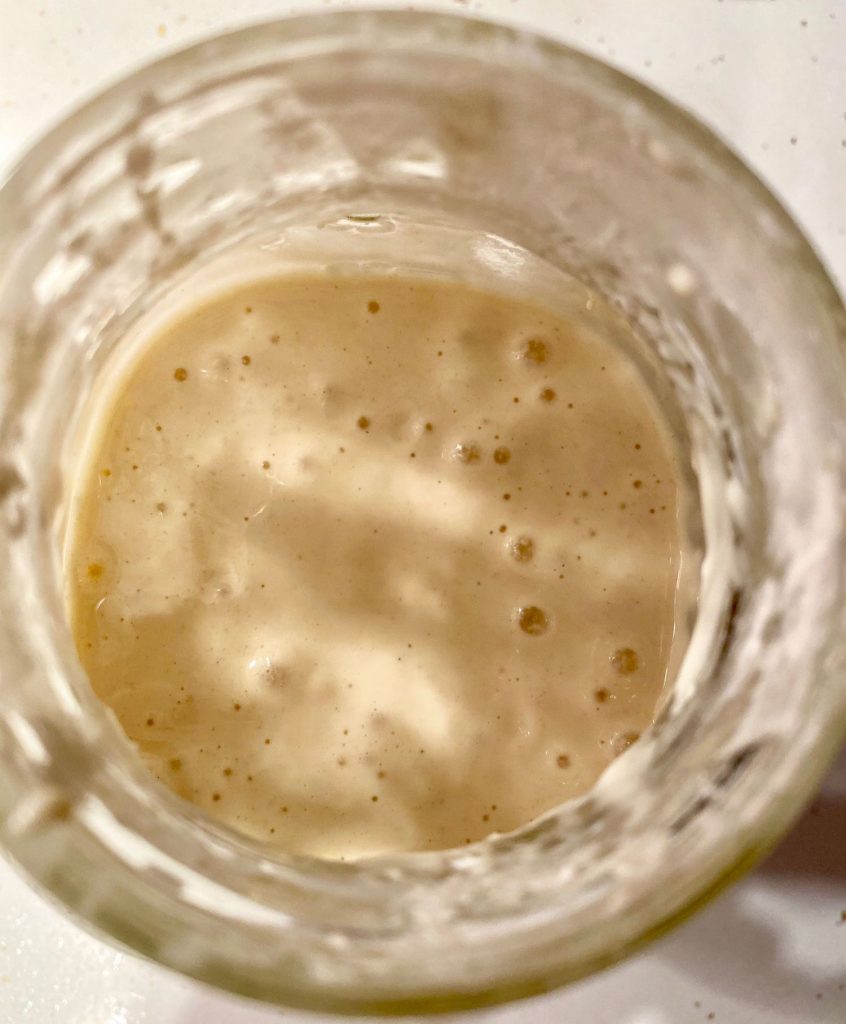
I wonder what makes my sourdough starter so good? Is it the abundance of moldy (but delicious) cheese in the frig? (I got that idea from a story of a local cheese seller scraping mold from a cheese cave in France and rubbing it onto the walls of his Cambridge cheese cellar.) Or is it something in the air where we live?
There are plenty of websites and great books explaining how to make sourdough starter and there are so many good sourdough recipes available.
Last fall this New York Times article, How to Make Sourdough Bread, inspired me to make starter again. The starter was amazing! It bubbled and tripled in size and smelled fantastic. I was really busy at the time, so I put it in the refrigerator and then neglected to feed it. Several weeks later it went down the drain. I hadn’t made a single loaf of bread.
Last month the Washington Post inspired me with this article, Now is the ideal time to learn to make sourdough bread. Here’s how.
Most instructions require weighing your bread ingredients precisely. However, weighing felt like too much work. I liked the realistic approach in these instructions, How to Make Sourdough Starter from Scratch. The recipe includes both weights and cup measurements. To get really casual about this process, equal parts of flour and water are all you need to make starter.
Once my starter was ready, I used this recipe, How to Make Sourdough Bread. It’s full of detail and clearly walks you through each step of the process. The use of a dutch oven to create steam for a chewy crust is genius. The recipe makes two loaves. I made a plain loaf and this walnut loaf.

To keep your sourdough starter fed, you need to discard half of it and replace it with an equal amount of flour and water. Many bread recipes use a small amount of starter relative to what you have in your starter pot. For example, I only needed one tablespoon of starter to make the two loaves of bread.
Lots of people have found ways to use the “discard” rather than throw it out. With flour in demand and hard to find on the shelves right now, I looked for recipes that used more of my starter. My next baking project was these sourdough English muffins. They use a cup of starter. Another bonus is that they freeze well, so you can store some for future breakfasts.
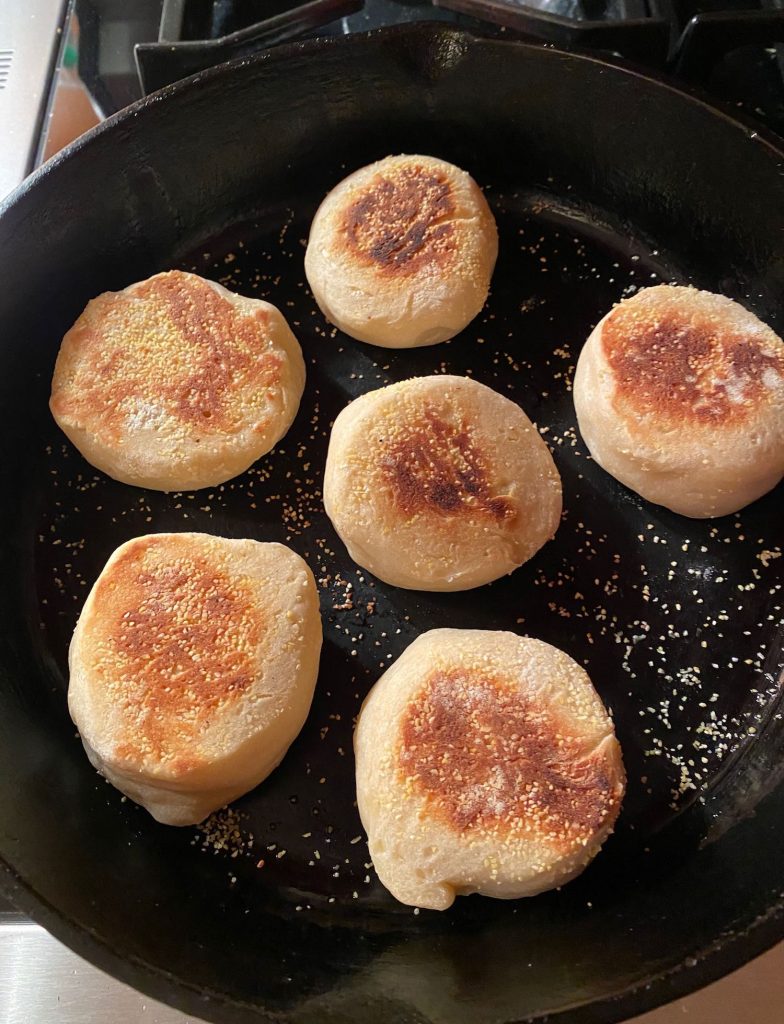
Speaking of breakfast, I used a cup of starter making these flaky, buttery sourdough biscuits for breakfast last Sunday. Mmmm.
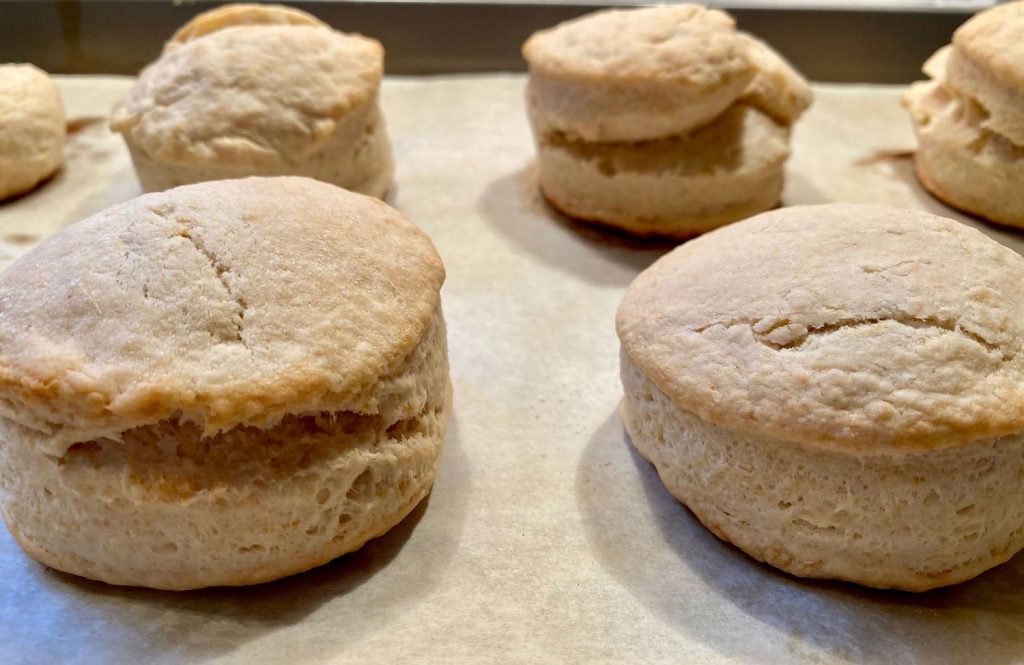
I used the ingredients and measurements in this recipe Crusty Sourdough Dinner Rolls, No Knead, No Added Yeast to make rolls (adding a seed and sea salt blend before baking). I borrowed a tip from another recipe that suggested adding an empty sheet pan to the oven, letting it heat it up, then adding water to it when you put the rolls into the oven. This creates steam in the oven while your rolls bake.
I didn’t score these rolls with a sharp knife and they split willy nilly, as you can see in the photo.
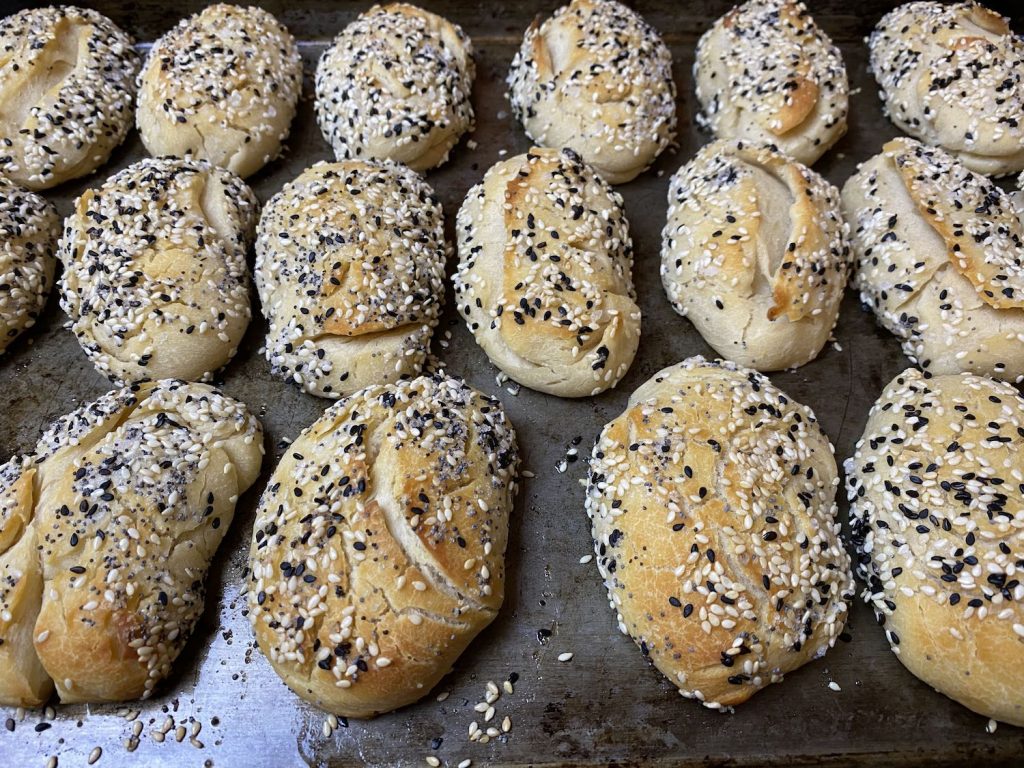
I hope that I’ve provided you with enough references to get started, should you have the urge to make sourdough bread. It’s a fun process and the results are so good.
Related Posts
You might enjoy some of these baking projects.
Great posts. I am embarking on my first foray into making starter and then baking bread. That said, I recently purchased a 50 lb bag of King Arthur flour recently so need to get busy. Love your posts. Hope to see you soon.
Hi Shelli, Good luck with your starter! I hope that you enjoy your bread projects. I got a 25-pound bag of King Arthur flour too. It was easier to find than a 5-pound bag. It will keep you going for a long time. Best wishes and stay well. Dottie